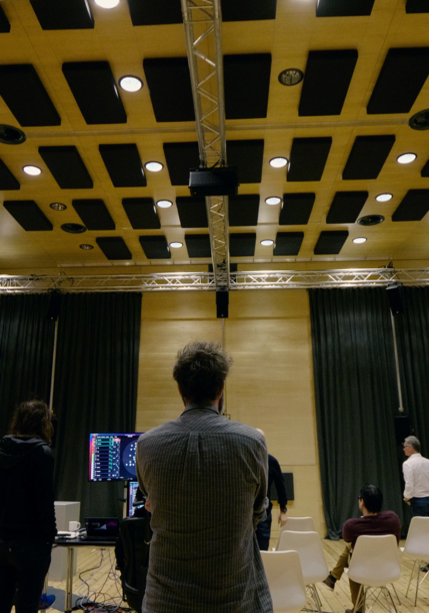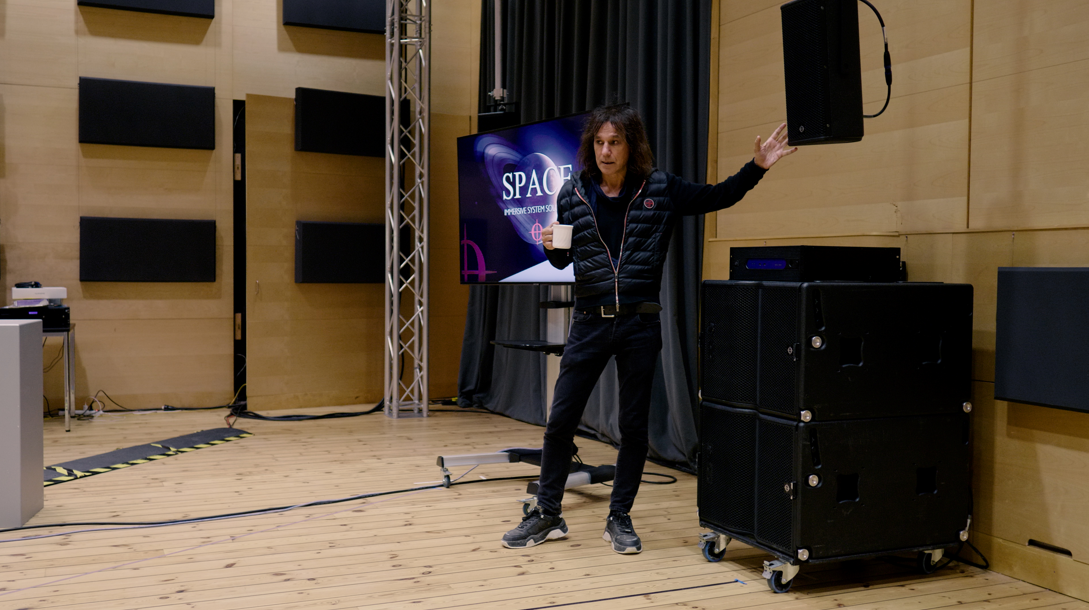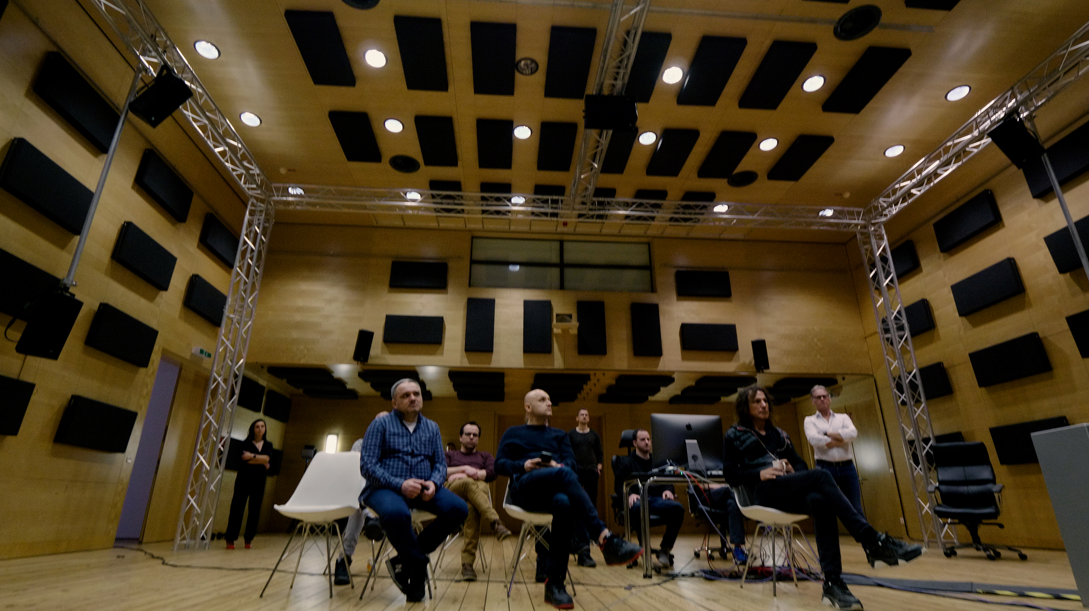In mid-March, writer, audiophile, and former studio engineer, Ben Jacklin, visited CODA Audio with his mind (and ears) open...
I was fortunate enough to be invited along to a demonstration of CODA Audio’s Immersive SPACE system. Having heard CODA’s line array and column systems in use, it is fair to say I was already impressed by the brand, but the 3D Immersive SPACE would prove to be something else entirely.
Sitting in the demo room at CODA’s Hannover HQ, I found myself in the centre of a 13.1 immersive system. This is by no means the limitation of the Immersive SPACE, which offers 128 outputs if required, driven by the brand’s groundbreaking Space Hub processor.
And then, the demo started.
My first listen of the 3D Immersive SPACE was a demo of a movie theme. In fact, my very first experience was a soloed acapella from that track. One vocal line.






